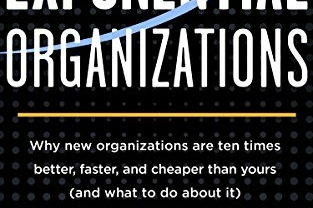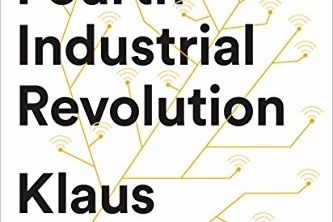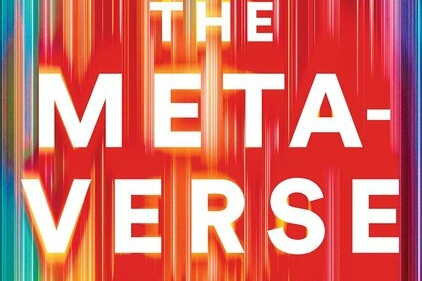In Thinking with Type: A Critical Guide for Designers, Writers, Editors, and Students, Graphics Designer and Curator Ellen Lupton provide a definitive guide to using typography in visual communication, from the printed page to the computer screen. The book covers typography essentials, from typefaces and type families, to kerning, tracking, and using a grid.
As Ellen puts it:
This is not a book about fonts. It is a book about how to use them. Typefaces are essential resources for the graphic designer, just as glass, stone, steel, and other materials are employed by the architect. Selecting type with wit and wisdom requires knowledge of how and why letterforms evolved.
Typography
Typography is a tool for doing things with shaping content, giving language a physical body, and enabling the social flow of messages. Typography is an ongoing tradition that connects you with other designers, past and future. Type is with you everywhere you go—the street, the mall, the web, your apartment.
The title of this book, Thinking with Type, is an homage to James Craig’s primer Designing with Type, the utilitarian classic that was our textbook at the Cooper Union.
Typography is an interface to the alphabet. User theory tends to favor normative solutions over innovative ones, pushing design into the background. Readers usually ignore the typographic interface, gliding comfortably along literacy’s habitual groove. Sometimes, however, the interface should be allowed to fail. By making itself evident, typography can illuminate the construction and identity of a page, screen, place, or product.
Words originated as gestures of the body. The first typefaces were directly modeled on the forms of calligraphy. Typefaces, however, are not bodily gestures—they are manufactured images designed for infinite repetition.
Movable Type
Movable type, invented by Johannes Gutenberg in Germany in the early fifteenth century, revolutionized writing in the West. Whereas scribes had previously manufactured books and documents by hand, printing with type allowed for mass production: large quantities of letters could be cast from a mold and assembled into “forms.” After the pages were proofed, corrected, and printed, the letters were put away in gridded cases for reuse.
Choosing Typeface
When choosing a typeface, graphic designers consider the history of typefaces, their current connotations, as well as their formal qualities. The goal is to find an appropriate match between a style of letters and the specific social situation and body of content that define the project at hand. There is no playbook that assigns a fixed meaning or function to every typeface; each designer must confront the library of possibilities in light of a project’s unique circumstances.
Context
A type family with optical sizes has different styles for different sizes of output. The graphic designer selects a style based on context. Optical sizes designed for headlines or display tend to have delicate, lyrical forms, while styles created for text and captions are built with heavier strokes.
Scale
Scale is the size of design elements in comparison to other elements in a layout as well as to the physical context of the work. Scale is relative. 12-pt type displayed on a 32-inch monitor can look very small, while 12-pt type printed on a book page can look flabby and overweight. Designers create hierarchy and contrast by playing with the scale of letterforms. Changes in scale help create visual contrast, movement, and depth as well as express hierarchies of importance.
Logotypes and Branding
A logotype uses typography or lettering to depict the name or initials of an organization in a memorable way. Whereas some trademarks consist of an abstract symbol or a pictorial icon, a logotype uses words and letters to create a distinctive visual image. Logotypes can be built with existing typefaces or with custom-drawn letterforms.
A logotype is part of an overall visual brand, which the designer conceives as a “language” that lives (and changes) in various circumstances. A complete visual identity can consist of colors, patterns, icons, signage components, and a selection of typefaces.
Text
Letters gather into words, words build into sentences. In typography, “text” is defined as an ongoing sequence of words, distinct from shorter headlines or captions. The main block is often called the “body,” comprising the principal mass of content. Also known as “running text,” it can flow from one page, column, or box to another. Text can be viewed as a thing—a sound and sturdy object—or a fluid poured into the containers of page or screen. Text can be solid or liquid, body or blood.
The Medium is not always the message
In the twentieth century, modern artists and critics asserted that each medium is specific. They defined film, for example, as a constructive language distinct from theater, and they described painting as a physical medium that refers to its own processes. Today, however, the medium is not always the message.
Design has become a “transmedia” enterprise, as authors and producers create worlds of characters, places, situations, and interactions that can appear across a variety of products. A game might live in different versions on a video screen, a desktop computer, a game console, and a cell phone, as well as on t-shirts, lunch boxes, and plastic toys.
Style Guides
Communicating hierarchy Complex content requires a deeply layered hierarchy. In magazines and websites, a typographic format is often implemented by multiple users, including authors, editors, designers, and web producers. If a hierarchy is clearly organized, users are more likely to apply it consistently. Designers create style guides to explain the princples of a hierarchy to the system’s users and demonstrate how the system should be implemented.
Accessibility
Sometimes good typography is heard, not seeen. Visually impaired users employ automated screen readers that linearize websites into a continuous text that can be read aloud by a machine. Techniques for achieving successful linearization include avoiding layout tables; consistently using alt tags, image captions, and image descriptions; and placing page anchors in front of repeated navigation elements that enable users to go directly to the main content. Various software programs allow designers to test the linearization of their pages.
GRID
A grid breaks space or time into regular units. A grid can be simple or complex, specific or generic, tightly defined or loosely interpreted. Typographic grids are all about control. They establish a system for arranging content within the space of a page, screen, or the built environment. Designed in response to the internal pressures of content (text, image, data) and the outer edge or frame (page, screen, window), an effective grid is not a rigid formula but a flexible and resilient structure, a skeleton that moves in concert with the muscular mass of information.
For graphic designers, grids are carefully honed intellectual devices, infused with ideology and ambition, and they are the inescapable mesh that filters, at some level of resolution, nearly every system of writing and reproduction.
Editing
Editing a text for publication has three basic phases.
- Developmental editing addresses broad issues of the content and the structure of a work; indeed, it can include judging a work’s fitness for publication in the first place.
- Copy editing (also called line editing or manuscript editing) seeks to root out redundancies, inconsistencies, grammatical errors, and other flaws appearing across the body of the work. The copy editor—who must study every word and sentence—is not expected to question the overall meaning or structure of a work, nor to alter an author’s style, but rather to refine and correct.
- Proofreading, which checks the correctness, consistency, and flow of designed, typeset pages, is the final stage. Depending on the nature of the project and its team, each of these phases may go through several rounds.
Ellen ends the book with some great advice:
Think more, design less.
Many desperate acts of design (including gradients, drop shadows, and the gratuitous use of transparency) are perpetrated in the absence of a strong concept. A good idea provides a framework for design decisions, guiding the work.
Say more, write less
Just as designers should avoid filling up space with arbitrary visual effects, writers should remember that no one loves their words as much as they do.
It is easier to talk than to listen
Pay attention to your clients, your users, your readers, and your friends. Your design will get better as you listen to other people.
Design is an art of situation
Designers respond to a need, a problem, a circumstance, that arises in the world. The best work is produced in relation to interesting situations—an open-minded client, a good cause, or great content.
An interface calls attention to itself at its point of failure
Design helps the systems of daily life run smoothly, letting users and readers ignore how things are put together. Design should sometimes announce itself in order to shed light on the system, exposing its construction, identity, personality, and politics.
The early bird gets to work before everyone else
Your best time for thinking could be early in the morning, late at night, or even, in rare circumstances, during class or between nine and five. Whether your best time is in the shower, at the gym, or on the train, use it for your hardest thinking.
Need help with developing a digital strategy for your business? Get in touch.


